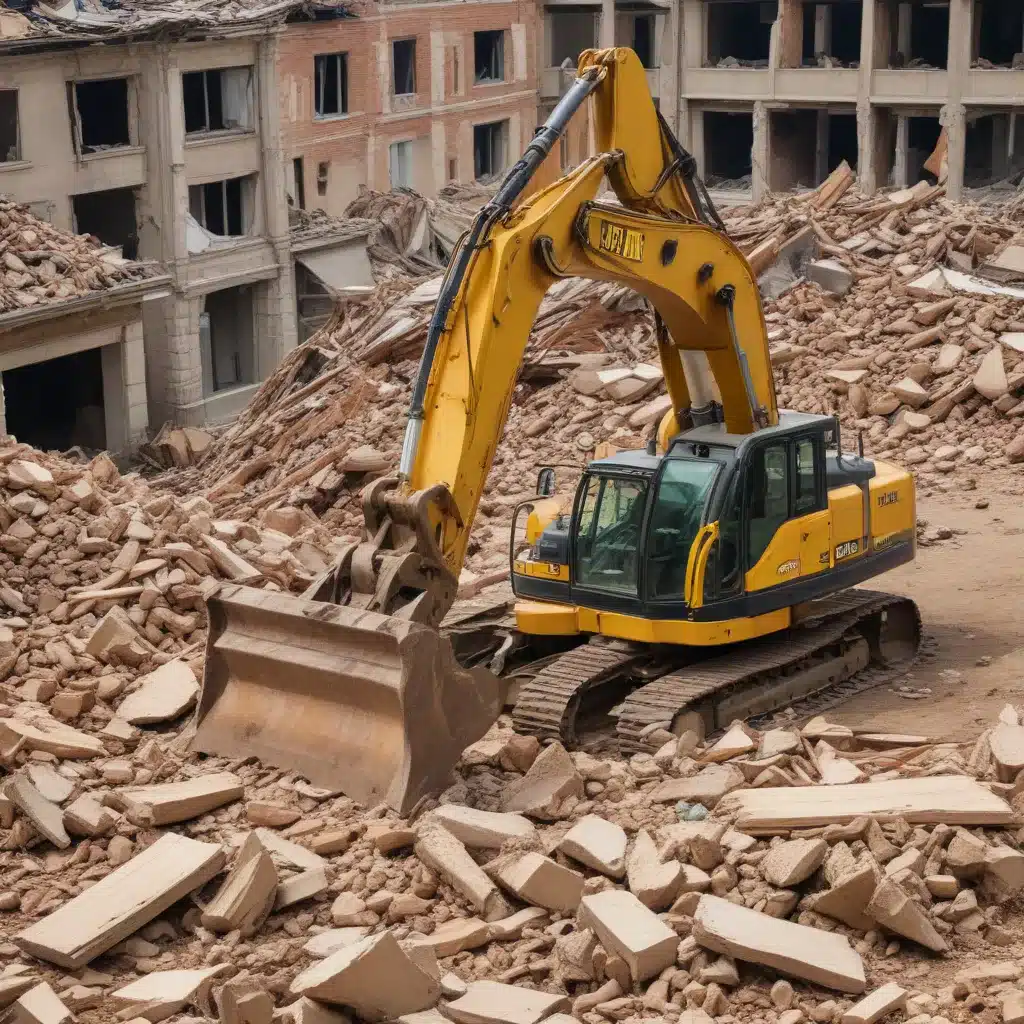
As an experienced junk removal specialist in Philadelphia, I’ve seen firsthand the challenges and environmental impacts of improper debris disposal. The management of construction and demolition (C&D) waste is a critical issue that requires a multifaceted approach to ensure sustainable practices and protect our local communities.
Navigating the C&D Waste Landscape
The construction industry in Philadelphia generates substantial amounts of waste, from discarded materials to demolition debris. These waste streams can include a wide range of materials, such as wood, concrete, metal, plastics, and even hazardous substances like asbestos. Improper handling and disposal of these materials can lead to a host of environmental and public health concerns.
One of the primary issues we face is the prevalence of open dumping and illegal dumping of C&D waste. These uncontrolled disposal practices can contaminate soil, surface water, and groundwater, posing serious risks to the local ecosystem and the community. The leachate from these dump sites can contain heavy metals, organic compounds, and other pollutants that can have devastating effects on the surrounding environment.
Moreover, the burning of C&D waste, a common practice in some areas, releases harmful air pollutants like particulate matter, carbon monoxide, and even dioxins. These emissions can exacerbate respiratory issues, especially in vulnerable populations such as children and the elderly.
Embracing Sustainable Solutions
To address these pressing concerns, we must adopt a comprehensive and sustainable approach to C&D waste management. As a junk removal specialist, I believe that the key to success lies in the implementation of innovative techniques, collaboration with stakeholders, and a steadfast commitment to environmental stewardship.
Recycling and Repurposing
One of the cornerstones of sustainable C&D waste management is the emphasis on recycling and repurposing. By diverting materials from landfills and open dumps, we can not only reduce the environmental impact but also unlock the inherent value in these discarded resources.
For example, concrete and masonry debris can be crushed and reused as aggregate in new construction projects, while wood and metal can be repurposed into furniture, building materials, or even art. This circular approach not only conserves natural resources but also reduces the demand for virgin materials, leading to a more sustainable construction industry.
Selective Demolition and Deconstruction
Another strategy we’ve employed with great success is the practice of selective demolition and deconstruction. Rather than resorting to conventional demolition methods that indiscriminately break down structures, we carefully disassemble buildings, meticulously separating and sorting the various materials. This approach allows for a more efficient recovery and recycling of valuable components, minimizing the amount of waste generated and maximizing the reuse potential.
Innovative Treatment Technologies
Alongside recycling and repurposing efforts, we’ve also explored the implementation of innovative treatment technologies to manage the C&D waste that cannot be easily recycled. For instance, thermal treatment processes, such as pyrolysis or gasification, can convert organic materials into useful energy sources, reducing the overall waste volume and diverting it from landfills.
Additionally, the use of advanced sorting and separation techniques, such as automated sorting systems or optical sorting, can help us better segregate and process different waste streams, ensuring that each component is directed to the most appropriate recycling or disposal method.
Collaboration and Community Involvement
Achieving sustainable C&D waste management in Philadelphia requires a collaborative effort among various stakeholders, including junk removal specialists, construction companies, regulators, and the local community.
Engaging with Contractors and Developers
We’ve found great success in working closely with construction contractors and real estate developers to educate them on the benefits of sustainable waste management practices. By demonstrating the cost savings, environmental advantages, and reputational benefits of responsible C&D waste handling, we’ve been able to encourage the adoption of more eco-friendly approaches.
Empowering the Community
Engaging the local community is also crucial to the success of our sustainable initiatives. We’ve organized educational workshops and outreach programs to raise awareness about the importance of proper C&D waste disposal and the opportunities for recycling and repurposing. By empowering homeowners, businesses, and community groups to become active participants in the process, we’ve seen a tangible increase in the diversion of waste from landfills and open dump sites.
Regulatory Framework and Policy Initiatives
Ultimately, the long-term success of sustainable C&D waste management in Philadelphia will depend on the establishment of a robust regulatory framework and policy initiatives that support and incentivize eco-friendly practices.
Strengthening Legislation and Enforcement
We’ve advocated for the implementation of stricter regulations and enforcement mechanisms to curb the proliferation of illegal dumping and open burning of C&D waste. By working closely with local authorities, we’ve been able to push for the development of comprehensive waste management plans and the allocation of resources for proper disposal and treatment facilities.
Incentivizing Sustainable Practices
Alongside regulatory measures, we’ve also championed the introduction of financial incentives and policy tools that encourage construction companies and junk removal specialists to embrace sustainable waste management practices. This could include tax credits, subsidies, or even mandatory recycling and reuse targets for C&D waste.
The Path Forward
As a junk removal specialist in Philadelphia, I’m proud to be at the forefront of the sustainable C&D waste management movement. By combining innovative techniques, collaborative partnerships, and a steadfast commitment to environmental protection, we can tackle the demolition debris dilemma head-on and pave the way for a more sustainable future.
But the work is far from over. We must continue to push the boundaries, explore new technologies, and engage with all stakeholders to ensure that the management of C&D waste in Philadelphia becomes a model for responsible and eco-friendly practices.
I encourage all homeowners, businesses, and community members to join us in this crucial endeavor. Together, we can transform the way we handle construction and demolition waste, safeguarding our local environment and creating a more sustainable Philadelphia for generations to come.
Are you ready to be a part of the solution? Visit our website at https://junkremovalphiladelphia.net/ to learn more about our services and how you can contribute to the sustainable management of C&D waste in our city.